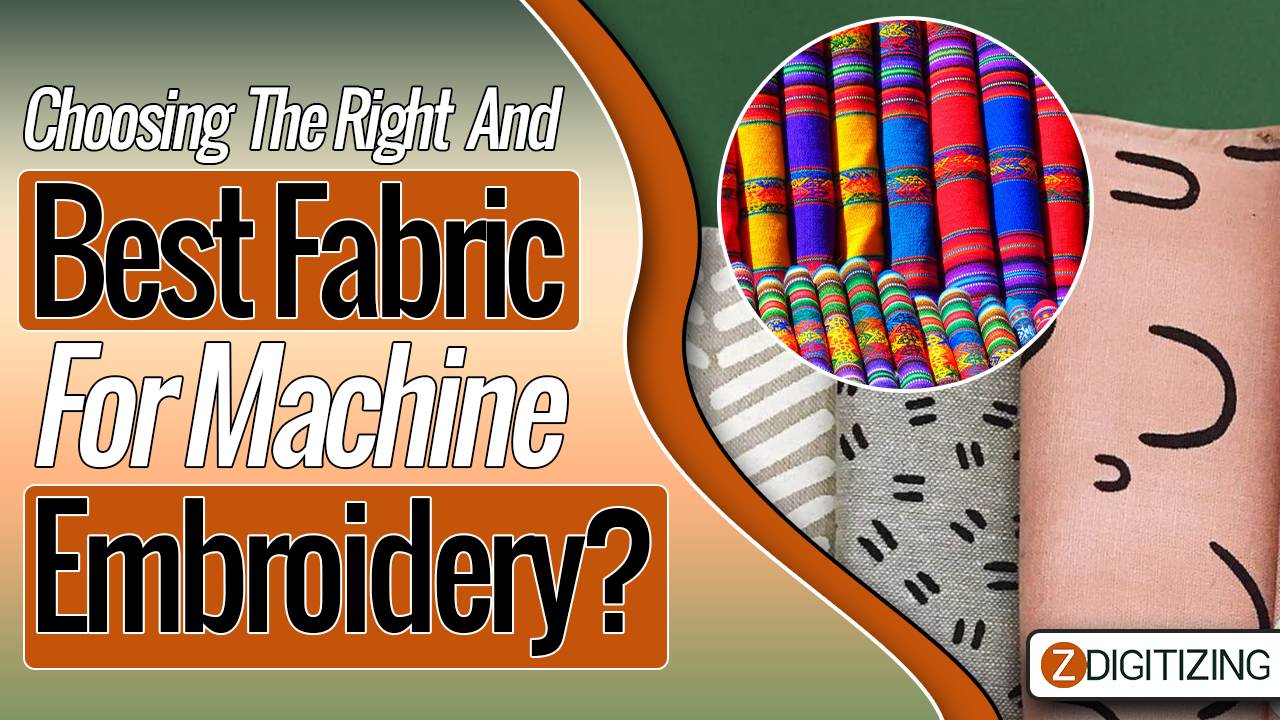Embarking on an embroidery project is a delightful journey of creativity, and selecting the right fabric is crucial for bringing your designs to life. In this comprehensive guide, we delve into the intricacies of choosing the best fabric for your embroidery machine, considering factors such as fabric type, weight, and texture to ensure impeccable results in your stitching endeavors.
1. Understanding Your Embroidery Machine
a. Overview of Embroidery Machines:
- Embroidery machines come in various types, including single-needle and multi-needle machines, each designed for specific applications.
- Understanding your machine’s capabilities, hoop sizes, and stitching features is vital in choosing compatible fabrics.
2. Considerations for Fabric Selection
a. Fabric Type:
- Cotton: A versatile choice, cotton is suitable for a wide range of embroidery digitizing projects. It provides a crisp and clean finish and is easy to work with.
- Linen: Known for its natural texture, linen is a great choice for rustic or vintage-inspired designs. It may require stabilizing for intricate patterns.
- Polyester: Polyester fabrics are durable, resistant to wrinkles, and provide a smooth surface for embroidery. They are often chosen for commercial applications.
b. Fabric Weight:
- Lightweight Fabrics (Chiffon, Organza): Suitable for delicate and intricate designs. Stabilizing is crucial to prevent puckering.
- Medium-Weight Fabrics (Cotton, Linen): Versatile for a wide range of designs. They provide a good balance between stability and flexibility.
- Heavyweight Fabrics (Denim, Canvas): Ideal for bold and dense designs. Ensure your machine can handle the thickness, and use appropriate needles.
c. Fabric Texture:
- Smooth Fabrics (Cotton, Satin): Offer a polished surface for precise embroidery. Great for detailed designs and lettering.
- Textured Fabrics (Terry Cloth, Corduroy): Add dimension to your embroidery. Stabilizing is essential to prevent distortion.
d. Fabric Color:
- Consider the color of the fabric in relation to your embroidery thread. Choose contrasting colors for designs to ensure visibility.
3. Stabilizing Your Fabric
a. Why Use Stabilizers:
- Stabilizers provide support to the fabric during embroidery, preventing stretching, distortion, and puckering.
- They are especially crucial for lightweight or stretchy fabrics.
b. Types of Stabilizers:
- Cut-Away Stabilizers: Ideal for medium to heavyweight fabrics. The excess stabilizer is trimmed away after embroidery.
- Tear-Away Stabilizers: Suitable for stable fabrics. The excess stabilizer is torn away after embroidery.
- Water-Soluble Stabilizers: Used for delicate fabrics or when the stabilizer needs to be entirely removed.
c. Choosing the Right Stabilizer:
- Match the stabilizer to the fabric type and weight. Experiment with test stitches to find the optimal stabilizing method for your project.
4. Testing Your Fabric and Design
a. Conducting Test Stitches:
- Always conduct test stitches on a scrap piece of fabric before starting your actual project.
- This allows you to assess thread tension, stitch density, and the overall compatibility of the fabric with your chosen design.
5. Special Considerations for Stretch Fabrics
a. Using Stabilizers for Stretch Fabrics:
- Stretch fabrics like knits require stabilizers to prevent distortion during embroidery.
- Choose a cut-away stabilizer for better support.
b. Hooping Techniques:
- Hoop the fabric and stabilizer together to ensure stability during stitching.
- Avoid overstretching the fabric when hooping.
6. Care Tips for Embroidered Fabrics
a. Washing and Ironing:
- Follow care instructions for both the fabric and embroidery thread.
- Turn the embroidered garment inside out before washing to protect the stitches.
b. Storage:
- Store embroidered items in a cool, dry place to prevent moisture damage.
- Avoid hanging heavy embroidered items for extended periods to prevent stretching.
7. Common Mistakes to Avoid
a. Neglecting Stabilizing:
- Skipping or inadequate stabilizing can lead to distorted and uneven embroidery. Always use the appropriate stabilizer for your fabric.
b. Ignoring Machine Specifications:
- Check your embroidery machine’s specifications for fabric compatibility and weight recommendations.
- Using fabrics that exceed the machine’s capabilities can result in stitching issues.
c. Rushing the Testing Phase:
- Take the time to conduct thorough test stitches on your chosen fabric before starting the actual project.
- Rushing this phase may lead to avoidable mistakes and frustration.
8. Conclusion
Choosing the right fabric for your embroidery machine is an art that enhances the beauty and longevity of your stitched creations. By considering fabric type, weight, texture, and color, and implementing proper stabilizing techniques, you pave the way for successful and visually stunning embroidery projects.
Remember that each fabric has its own personality, and understanding how it interacts with your embroidery machine is key to achieving professional and polished results. So, let your creativity soar as you embark on the exciting journey of pairing the perfect fabric with your embroidery designs.
Zdigitizing
We trust this article might really work out for you. To digitize embroiery plan you would require an expert like ZDigitizing, as digitizing is a mind boggling process.
Zdigitizing is a digitizing embroidery service organization that gives embroidery digitizing service and Vector Art Services all around the world to organizations, ventures, and enterprises. zdigitizing gives fashionable, strong, and sensible custom digitizing and vector craftsmanship administrations. We have been conveying first class digitizing embroidery administrations for 20+ years.

